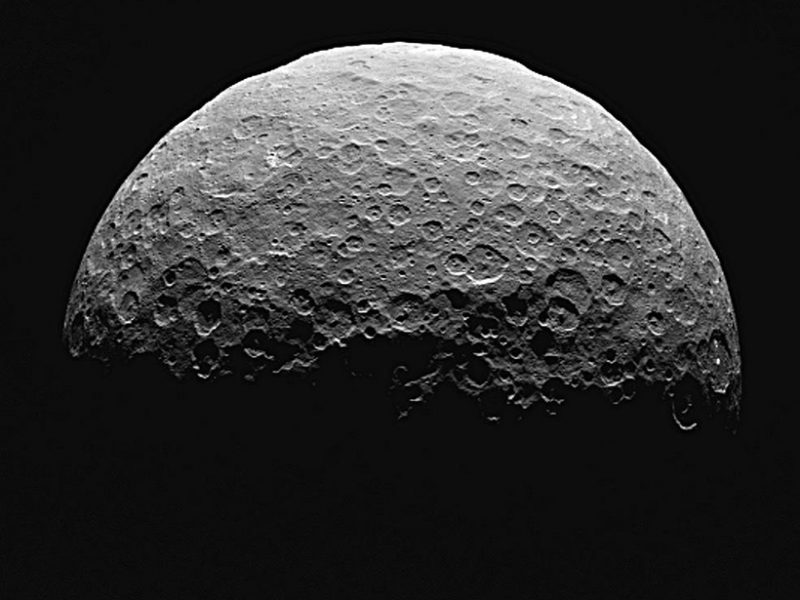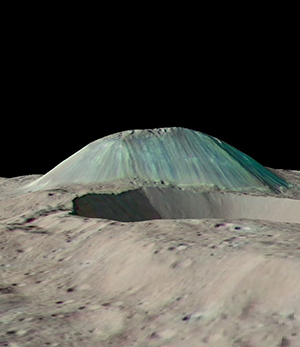
The dwarf planet Ceres - now we have evidence it's geologically active.
It was science popularizer Isaac Asimov, in his Barbados lecture on February 6, 1976, who may have been the first to opine that the (then) asteroid Ceres might be geologically active. Asimov had no data or space craft findings to cite because, well, there weren't any. Bear n mind this was still months before the Viking landers (1,2) would reach Mars.
No craft had yet reached the asteroids, but Asimov surmised it might just be possible that at least one of them - maybe Ceres (one of the largest) might be different from the inert, dead worlds most believed them to be.
Now, the evidence has emerged in a number of breakthrough research findings mainly thanks to NASA's DAWN probe which entered orbit around Ceres in March, 2015.
In six papers published on Sept. 1, 2016 in Science, planetary scientists from the Dawn mission that has a spacecraft circling Ceres catalog a bounty of surface features pointing to one conclusion: “Ceres appears to be geologically active,” said Carol Raymond, the mission’s deputy principal investigator.
One of these surface features is a 17-kilometer-wide, 4-kilometer-high volcano that once erupted ice. This “cryovolcano” rises half the height of Earth’s Mount Everest in the Himalayas. The researchers spotted the cryovolcano using Dawn’s Framing Camera, which took images of 99% of the dwarf planet’s surface. The feature’s angled slopes with flow-like structures and concave summit are reminiscent of lava domes on Earth, said Ottaviano Ruesch, a postdoctoral researcher at NASA’s Goddard Space Flight Center and lead author on the paper detailing the feature. He compared it to a lava dome found in Washington State’s Mount St. Helens volcanic crater. Although features of cryovolcanic origin have been spotted on other bodies in the solar system, the newly named Ahuna Mons on Ceres stands out as the first observed cryovolcanic dome, Ruesch said.
On Earth, lava domes form when sticky, viscous, molten rock bubbles slowly to the surface, solidifies, and piles up around the vent. On Ceres, where temperatures average about 160 kelvins (–113°C), volatile, rich, salty water “erupts,” the researchers suggest. The presence of salts on Ceres lowers the freezing temperature of water, said Ruesch. The lowered freezing temperature keeps the water a liquid that slowly rises to Ceres’s surface. There it solidifies and has piled up into a 4-kilometer-high mound.
Although Ahuna Mons is no longer active, by analyzing the number of craters around the feature, scientists estimate that it’s only about 200 million years old, Ruesch said, which is considered geologically young.

False color image of Ahuna Mons from DAWN framing camera (NASA/ JPL)
Clearly, if Asimov were alive today he'd be absolutely thrilled by these findings and be among he first to say: "See! I told you so!"
No comments:
Post a Comment